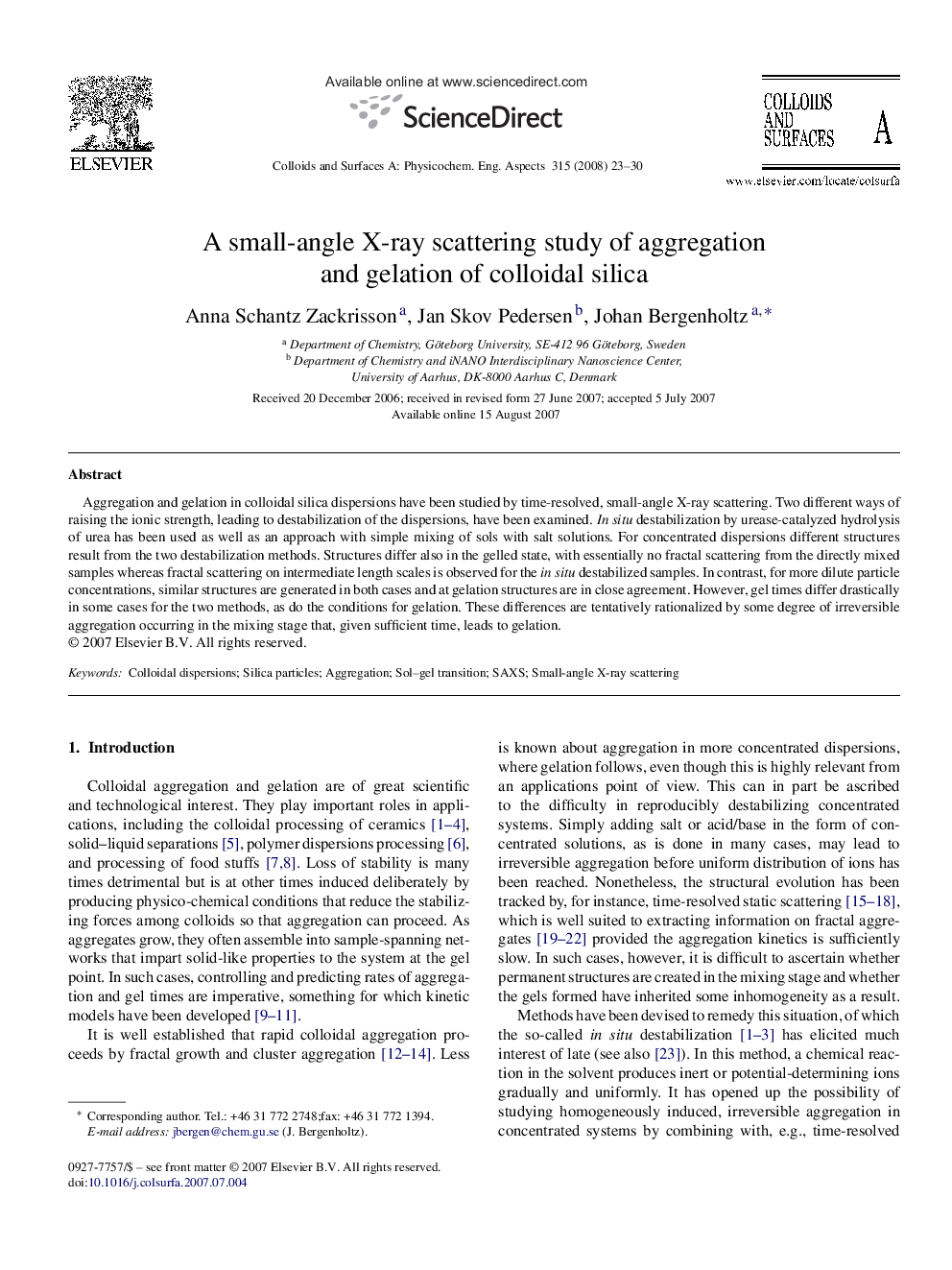| Article ID | Journal | Published Year | Pages | File Type |
|---|---|---|---|---|
| 597136 | Colloids and Surfaces A: Physicochemical and Engineering Aspects | 2008 | 8 Pages |
Aggregation and gelation in colloidal silica dispersions have been studied by time-resolved, small-angle X-ray scattering. Two different ways of raising the ionic strength, leading to destabilization of the dispersions, have been examined. In situ destabilization by urease-catalyzed hydrolysis of urea has been used as well as an approach with simple mixing of sols with salt solutions. For concentrated dispersions different structures result from the two destabilization methods. Structures differ also in the gelled state, with essentially no fractal scattering from the directly mixed samples whereas fractal scattering on intermediate length scales is observed for the in situ destabilized samples. In contrast, for more dilute particle concentrations, similar structures are generated in both cases and at gelation structures are in close agreement. However, gel times differ drastically in some cases for the two methods, as do the conditions for gelation. These differences are tentatively rationalized by some degree of irreversible aggregation occurring in the mixing stage that, given sufficient time, leads to gelation.
